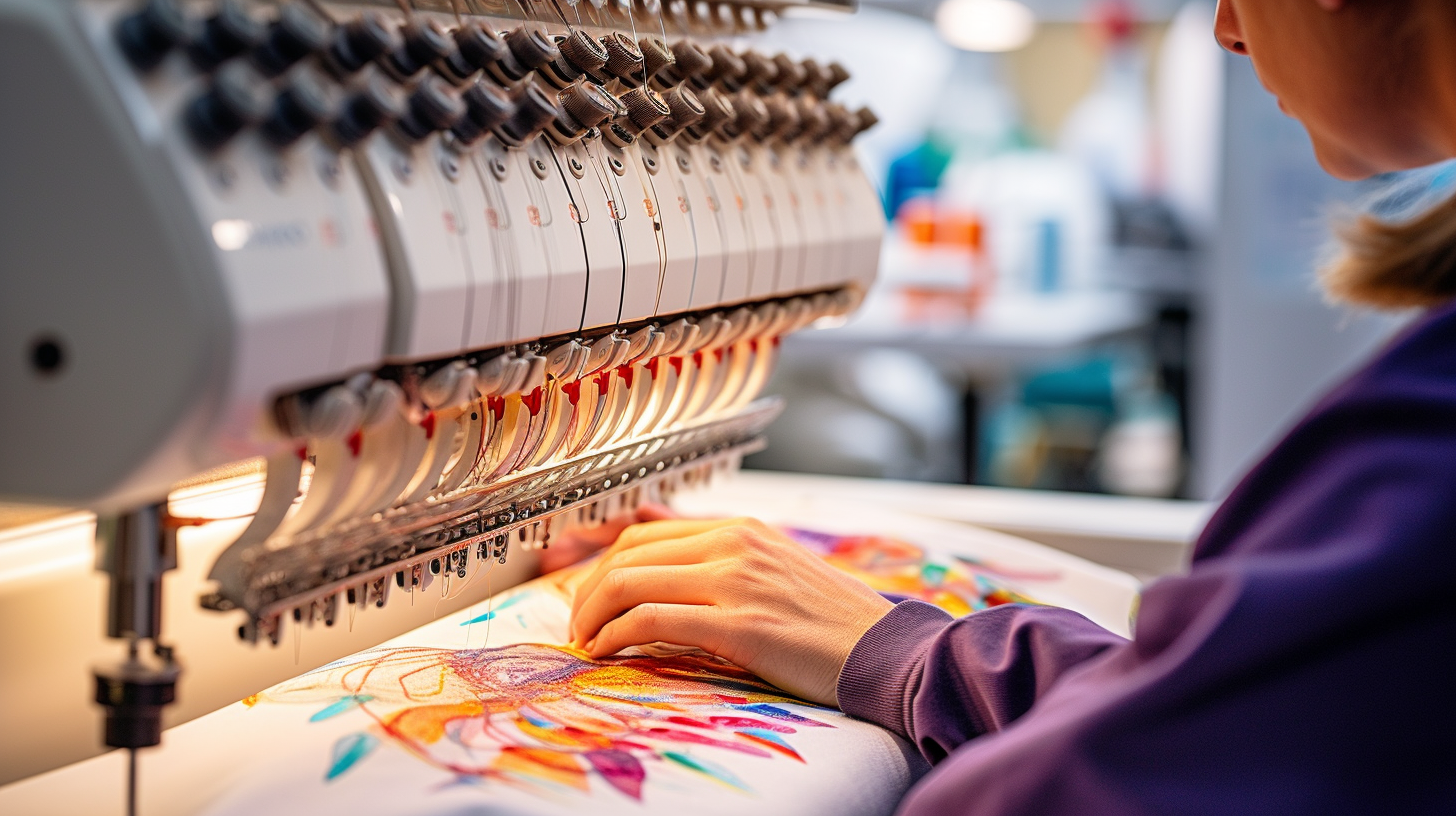Expert Digitizing for Embroidery: High-Quality Styles
Expert Digitizing for Embroidery: High-Quality Styles
Blog Article
Grasping the Needlework Digitizing Refine: Your Ultimate Guide
Needlework digitizing is a meticulous craft that calls for precision and experience to convert detailed designs right into electronic layouts for device needlework. As craftsmens start this journey to master the needlework digitizing procedure, a thorough understanding of the basics establishes the structure for quality. Beyond the primary understanding exists a world of advanced software application, specialized devices, and nuanced strategies waiting to be discovered. By diving into the nuances of digitizing, one can open a world of creative opportunities and raise their needlework projects to new heights.

Comprehending Embroidery Digitizing Essentials
Embroidery digitizing essentials form the structure upon which complex designs are translated into machine-readable styles for specific stitching. This first action in the needlework digitizing process is vital for ensuring that the last stitched product is a devoted depiction of the initial style. Understanding embroidery digitizing essentials involves realizing key principles such as stitch kinds, stitch direction, density, rug, and pull payment.
Sew types play an essential function in determining the visual and textural end result of the stitched style. By picking the suitable stitch type, whether it be satin, fill, or running stitch, digitizers can achieve the preferred effect and improve the overall high quality of the embroidery. Furthermore, stitch instructions influences the circulation and dimension of the design, while thickness determines the spacing and coverage of the stitches.
Moreover, rug stitching gives security to the layout by securing the material and preventing distortion during the embroidery process. Draw payment is another important factor to consider to neutralize the all-natural propensity of textile to agreement when stitched. Grasping these embroidery digitizing fundamentals is basic for producing professional-quality embroidered items.
Selecting the Right Digitizing Software
Selecting the suitable digitizing software application is a vital choice that significantly influences the performance and quality of the embroidery digitizing process. Digitizing for Embroidery. When picking the right digitizing software, it is necessary to think about elements such as the intricacy of designs you intend to create, the user-friendliness of the software application, the level of customer support offered, and the compatibility with your needlework device
There are different digitizing software application options offered in the market, varying from basic programs for novices to innovative software program for specialist digitizers. Some preferred selections consist of Wilcom EmbroideryStudio, Hatch Embroidery Software Application, and PulseID. These software plans provide a wide variety of devices and attributes to aid you produce elaborate designs with simplicity.
Prior to deciding, it is advisable to discover the various software options with complimentary trials or trials to figure out which one best fits your demands. In addition, reading evaluations and looking for referrals from knowledgeable digitizers can give useful insights right into the strengths and weaknesses of each software application bundle (Digitizing for Embroidery). By carefully evaluating your requirements and contrasting the functions of various digitizing software program, you can make an educated choice that enhances your needlework digitizing workflow
Digitizing Tools and Strategies

Optimizing Style Settings for Needlework
Mastering the ins and outs of design settings is basic in accomplishing optimal lead to the embroidery digitizing procedure, structure upon the foundation laid by comprehending digitizing devices and strategies. When optimizing layout setups for needlework, it is essential to think about factors such as stitch kind, density, rug, pull payment, and enrollment. Stitch type selection affects the total look of the layout, with options like satin, fill, and running stitches providing various structures and effects. Density refers to the spacing and density of stitches, impacting the layout's insurance coverage and longevity. Appropriate rug stitching gives stability and prevents fabric distortion, particularly for click this intricate layouts or on stretchy products. Pull payment readjusts for material stretch during sewing, making certain precise style replication. Registration setups straighten different aspects of the design properly, maintaining overall visit this site right here style stability. By fine-tuning these layout setups, embroiderers can improve the high quality and precision of their embroidered creations.

Troubleshooting Common Digitizing Issues
When experiencing typical digitizing issues throughout the embroidery process, it is necessary to understand the origin and execute effective services without delay. One usual problem is stitch thickness problems, where stitches might be also thick, causing the fabric to pucker, or as well sparse, resulting in spaces in the style. Adjusting the stitch thickness settings in the digitizing software program can assist solve this concern.
An additional regular challenge is string breaks during the embroidery process. This can occur as a result of different reasons such as incorrect stress settings, plain needles, or using low-grade string. Making sure appropriate maintenance of the needlework device, including normal needle adjustments and stress modifications, can decrease the incident of string breaks.
Additionally, design registration errors can cause misaligned components within the needlework design. Examining the design alignment in the digitizing software program and making needed modifications prior to sewing can assist in preventing this concern. By attending go to this website to these common digitizing concerns quickly and efficiently, you can make sure a smoother needlework process and high-grade completed items.
Conclusion
Finally, understanding the embroidery digitizing process needs a strong understanding of the fundamentals, the ideal option of software program, and expertise of devices and techniques. Maximizing style settings and repairing usual digitizing issues are essential action in making certain top notch embroidery outcomes. By adhering to these steps vigilantly, one can achieve accuracy and efficiency in the digitizing procedure.
Report this page